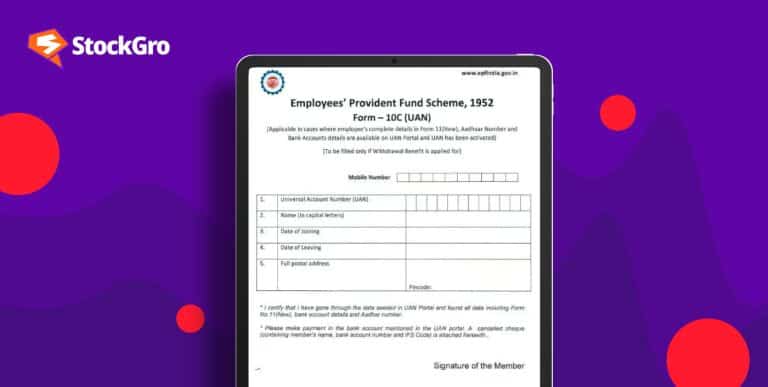
In the field of business management, financial ratios are of great importance. These give information about how efficient and healthy the company’s operation is. The AP turnover ratio is one example of such a ratio. With this ratio, companies can determine their ability to manage short-term debts they owe to various suppliers in a timely manner.
Cash flow optimisation, ensuring good relations with suppliers, and making sound financial choices are some of the ways that a business entity can use this ratio for its benefit.
This article provides an example which illustrates the concept of an accounts payable turnover ratio.
Must read: Unlocking financial insights: The power of ratio analysis
What is the accounts payable turnover ratio?
In accounting terms, payables liquidity is measured by this metric. The AP turnover ratio indicates how fast a firm pays its creditors. Accounts payable turnover shows the number of times payables are settled off during a particular period.
Payables are short-term debts or money owed by the entity to other firms or suppliers. The ratio reflects how quickly companies clear amounts owed to vendors.
In simpler terms, the AP metric is a metric used in fundamental analysis. It provides insights into how efficiently an organisation manages its outstanding bills and reflects its overall financial health.
Accounts payable turnover ratio formula
Utilise the following formula to determine the AP turnover ratio:
Accounts payable turnover ratio = Total purchasesAverage accounts payables
The AP ratio is expressed in days. For this calculation, one can find out an average accounts payables by applying this equation:
Average accounts payable= (Opening accounts payable + Closing accounts payable)2
To balance out the fluctuations in payables over time, the AP ratio employs the average amount of payables.
Accounts payable turnover ratio interpretation
Comparing the ratio to the industry norms is one way of analysing the accounts payable turnover ratio. This comparison helps evaluate a company’s performance relative to others. This is because if an entity’s AP ratio is higher than the industry standard, it suggests that it has better debt-paying ability, which benefits both creditors and suppliers.
It also means that when an organisation fails to meet the industry standard for accounts payable turnover ratio, it reflects on ineffective cash management and late invoice payments, leading to a poor credit rating for the company and reduced negotiation power on credit terms with suppliers in the future.
The firm could occasionally evaluate its accounts payable turnover, for instance, once in a quarter or annually. Furthermore, it assists in monitoring the success of prior efforts aimed at increasing this ratio over some time.
You may also like: Everything you need to know about credit ratings.
Accounts payable turnover ratio example
Consider ABC Ltd, a hypothetical firm, to illustrate the AP ratio. This example will explain the computation of the ratio and its implication.
ABC Ltd wants to assess how efficiently it has paid its merchants over the past year. It should calculate its accounts payable turnover ratio with these details:
- Annual spent on purchases: ₹10 lakh
- AP at the start of the year: ₹1 lakh
- AP at the end of the year: ₹1.5 lakh
Determine the average AP:
You can find the average accounts payables by adding the beginning and ending amounts of payables and then dividing them by 2.
Average accounts payable= (100000 + 150000)2 = 125,000
Determine the AP ratio:
Using the formula:
Accounts payable turnover ratio = 100000012500 = 8 days
The metric for ABC Ltd is eight days. This indicates that ABC Ltd settles its average amounts owed to creditors eight times a year.
How to improve the accounts payable turnover ratio?
The following are some methods to boost your AP turnover:
- Do negotiations: Arrange better payment conditions with vendors to ensure your cash flow management is more efficient.
- Improve liquidity position: A high AP turnover signifies effective cash management. Pay accounts promptly to maintain a healthy turnover ratio.
- Automate invoice processing: Implement automated systems for invoice handling. This reduces processing time, avoids late fees, and streamlines the payment process.
- Timely and accurate invoices: Send out correct invoices promptly. Reminders to customers before due dates can also help ensure timely payments.
- Build reliable supplier partnerships: Satisfied customers are more likely to pay promptly. Cultivate strong relationships with reliable suppliers.
Further reading: Understanding capital gearing: What you need to know
Bottomline
This measure provides insight into an organisation’s ability to meet short-term payment obligations. By analysing this ratio regularly businesses can identify areas for improvement, optimise cash flow, and foster strong merchant relationships, contributing to long-term success and resilience.
FAQs
- What is a good AP to AR ratio?
The perfect ratio of AP to AR depends mainly on the industry and the firm’s specific factors. In an ideal situation, a balanced ratio close to 1: 1 is preferred, meaning that cash outflows from suppliers equal the amount of money coming in from customers. However, this may differ; for instance, a higher AP/AR ratio could mean effective supplier payments, while a lower ratio may imply strong accounts receivable collections.
- Is high AP turnover good?
It is good when the ratio of Accounts Payable (AP) turnover is high. This means that the company pays its suppliers and controls its short-term obligations properly. Therefore, this shows that there is strong cash flow management and good relationships with suppliers. It may also suggest that the company does not take full advantage of credit terms and, therefore, misses opportunities for optimising cash flow by delaying payments within the allowed credit period.
- How do you interpret the AR turnover ratio?
The account receivables turnover ratio is a measure of how efficiently the company collects customer debts. A high AR turnover rate indicates a good credit policy and fast collections, thus implying effective cash flow management. Conversely, a low ratio may indicate difficulty in collecting payment due to either loose credit terms or problems with customers’ ability to pay. This ratio assists in determining the liquidity position and operational efficiency in accounts receivable management for any business entity.
- How do you increase the AR turnover ratio?
To increase the turnover ratio of Accounts Receivable (AR), the company can introduce tighter credit policies, which will ensure that clients have good credit. This includes simplifying the invoicing process to quicken billing, providing discounts for prompt payments, and maintaining regular contact with overdue accounts. In addition, using electronic payment methods may speed up the payment process, thereby improving receivables management efficiency and increasing the AR turnover ratio.
- What happens when accounts payable increases?
Whenever there is an increase in payables, it means that a firm defers vendor payments, thereby increasing the amount of money in the meantime. This can lead to better short-term liquidity, enabling the firm to use this money for other operational necessities or investments. However, constantly growing accounts payable may tend to overburden supplier relationships, leading to unfavourable credit conditions or troubles in the supply system as suppliers become worried about delayed payments.

